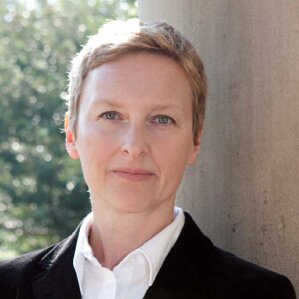
Contact Information
Biography
My group develops computer simulations that describe how aerosol particles are created, transported, and transformed in the atmosphere. We use these simulations, together with observational and satellite data, to understand how aerosol particles impact human health, weather, and climate. This understanding guides us in developing effective pollution mitigation strategies and responses to global climate change.
Aerosol particles are microscopic particles suspended in the atmosphere. Some of them, for example dust, sea salt, or pollen, come from natural sources. Others are man-made, such as soot particles from diesel engines, or sulfate particles from coal-fired power plants. In a typical urban environment we inhale about 5 million particles with each breath, all of which vary greatly in size and chemical composition.
Aerosol particles impact our lives in many ways. Since they are so small, they can penetrate deep into our lungs and our bloodstream, causing respiratory and cardiac diseases. Aerosol particles have also dramatic impacts on weather and climate. For example, they block and absorb sunlight, changing the heating of the Earth, and they act as the seeds that produce water droplets in clouds.
I am always looking for new graduate students to join my group. Please contact me for questions about potential projects or about the application process at our department.
Additional Campus Affiliations
Professor, Climate, Meteorology and Atmospheric Sciences
Professor, Civil and Environmental Engineering
Professor, National Center for Supercomputing Applications (NCSA)
External Links
Recent Publications
Dall’erba, S., Riemer, N., Xu, Y., Xu, R., & Yao, Y. (Accepted/In press). Identifying the key atmospheric and economic drivers of global carbon monoxide emission transfers. Economic Systems Research. https://doi.org/10.1080/09535314.2023.2300787
D'Aquino, Z., Arabas, S., Curtis, J. H., Vaishnav, A., Riemer, N., & West, M. (2024). PyPartMC: A Pythonic interface to a particle-resolved, Monte Carlo aerosol simulation framework. SoftwareX, 25, Article 101613. https://doi.org/10.1016/j.softx.2023.101613
Li, W., Riemer, N., Xu, L., Wang, Y., Adachi, K., Shi, Z., Zhang, D., Zheng, Z., & Laskin, A. (2024). Microphysical properties of atmospheric soot and organic particles: measurements, modeling, and impacts. npj Climate and Atmospheric Science, 7(1), Article 65. https://doi.org/10.1038/s41612-024-00610-8
Shen, W., Wang, M., Riemer, N., Zheng, Z., Liu, Y., & Dong, X. (2024). Improving BC Mixing State and CCN Activity Representation With Machine Learning in the Community Atmosphere Model Version 6 (CAM6). Journal of Advances in Modeling Earth Systems, 16(1), Article e2023MS003889. https://doi.org/10.1029/2023MS003889
Ghosh, S., Dey, S., Das, S., Riemer, N., Giuliani, G., Ganguly, D., Venkataraman, C., Giorgi, F., Tripathi, S. N., Ramachandran, S., Rajesh, T. A., Gadhavi, H., & Srivastava, A. K. (2023). Towards an improved representation of carbonaceous aerosols over the Indian monsoon region in a regional climate model: RegCM. Geoscientific Model Development, 16(1), 1-15. https://doi.org/10.5194/gmd-16-1-2023